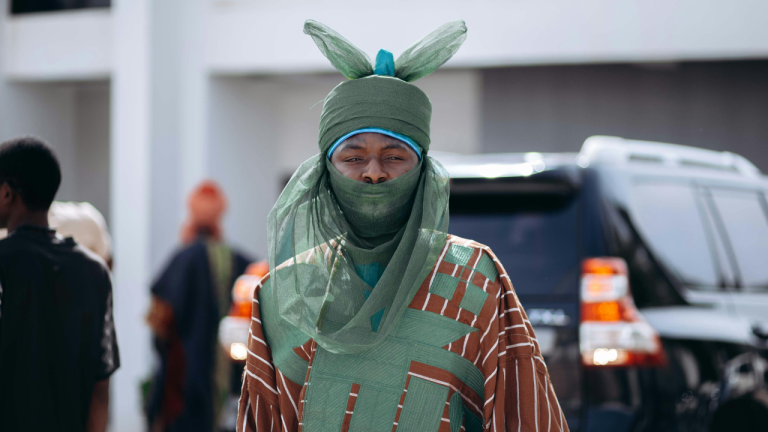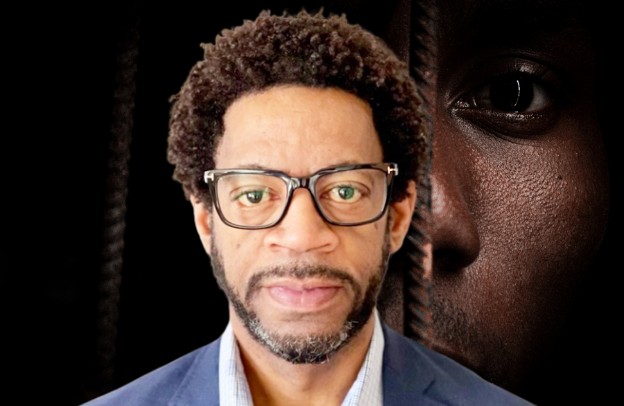The Gerontocratic Structure Of Esan Society: Power In The Hands Of Oldest Members Of The Village

The rich culture of Esan society is woven around the principle of gerontocracy and the reverence for age, wisdom, and communal cohesion. Rooted deeply in tradition, this hierarchical system of governance among Esan people finds its expression through a series of age grades, each with its own distinct roles and responsibilities.
Want to learn more about storytelling? Start by downloading the first chapter of The Storytelling Mastery.
At its core lies the Omijiogbe, the head of the extended family unit, embodying the authority and guidance that permeates Esan familial structures. As families expand and lineages form, the mantle of leadership passes to the Odionwele, the eldest of the elders, whose wisdom and experience serve as the guiding force in village affairs.
Beneath them, the Igene and Egbonughele age grades carry out essential tasks, ensuring the smooth functioning of communal life. These are what we are going to be discussing in today’s article. But first, what is even Gerontocracy? Let’s start from there for those who might be hearing the term for the first time.
What is Gerontocracy?
A gerontocracy is an oligarchic system wherein governance is vested in leaders considerably senior to most of the adult populace. This system is characterized by a concentration of power within the ruling class, with authority increasingly accruing with age.
Consequently, the oldest individuals in the leadership hierarchy wield the most significant influence and control over decision-making processes within the entity.
The structures often prioritize the perspectives and interests of the elderly, shaping policies and priorities accordingly. With that out of the way, let’s concentrate on Esan Society.
Omijiogbe: The Head of the Extended Family Unit
In Esan culture, the family unit extends beyond the nuclear family, encompassing relatives, domestic workers, and unmarried siblings. At the helm of this extended family is the Omijiogbe, who wields significant authority.
Acting as the spokesperson and administrator, Omijiogbe oversees religious and political matters, ensuring the security and well-being of all family members. They serve as the mediator in disputes and hold the responsibility of maintaining the ancestral shrine, thus serving as a crucial link between the living and the ancestors.
As described by the publication, “Esan / Ishan”, published at 101lasttribes.com, Omijiogbe was the go-between or the mediator through whom the members of the family appealed to their ancestors.
Hence, he bore the exclusive duty of overseeing the family shrine, offering prayers to the ancestors for harmony, absolution from transgressions, and the advancement of prosperity. It is ingrained in Esan tradition that the living descendants must honor their ancestors diligently to avert calamities and draw favorable outcomes and blessings unto themselves.
Odionwele: The Eldest of the Elders
As families multiply and form lineages, the eldest member ascends to the position of Odionwele, the foremost elder. The Odionwele represents the central figure in village affairs, presiding over meetings and making decisions alongside their executives, known as Edion.
The word “Odionwele” is derived from Edion which can also be translated as the council of elders, just as the word “Prime minister” is to the council ministers.
The Odionwele’s authority extends to addressing serious issues such as crimes, and issues affecting the defense and safety within the community, supported by the village council comprised of the most elderly members of Edion. But the importance of Odionwele is much more than that for Esan people.
See our previous article – Agba, The Esan God of War – 1: The Origin Of Uromi And Esanland
In Esan society, the concept of Odionwele, or village head, holds significant importance in maintaining social order and cohesion. Rooted in a system of lineage and kinship, the institution of Odionwele reflects the deep-seated traditions and values of the Esan people.
Central to the organization of Esan villages are the Idumu, or quarters, which are comprised of closely related lineages. These lineages, often connecting and interconnected through familial ties, form the foundational units of Esan society. Within each idumu, the leader of the eldest lineage assumes the role of head or leader, wielding authority and guiding the affairs of the quarter.
Crucially, membership within an idumu is mostly predicated on claims of common descent or blood relation. This emphasis on kinship underscores the tight-knit nature of Esan communities and serves as a mechanism for preserving cultural heritage and identity. Consequently, intermarriages between members of the same idumu are typically discouraged, further reinforcing the bonds of kinship and lineage.
As idumu merge to form villages, the position of Odionwele remains a pivotal aspect of community governance. Upon the death of the incumbent Odionwele, the mantle of leadership typically passes to the most elderly among the elders by age. This tradition of succession reflects the reverence for wisdom, experience, and seniority within Esan culture, ensuring continuity and stability in leadership.
The Odionwele serves as more than just a figurehead; they are entrusted with the responsibility of representing the interests of the village, resolving disputes, and upholding communal values. Their role extends beyond mere governance to encompass spiritual and ceremonial duties, acting as custodians of tradition and custodians of the collective memory of the community.
In essence, the institution of Odionwele epitomizes the intricate interplay between lineage, leadership, and continuity within Esan society. Following the council of elders, headed by the Odionweleare the Igene.
Igene: Guardians of Physical Defense and Community Tasks
The Igene age grade plays a vital role in Esan society, particularly in matters of physical defense and communal tasks. Tasked with handling responsibilities beyond the competence of lower grades, the Igene members lead major construction projects, assist in communal activities like burial rites, and maintain discipline within the group.
Their leader ensures adherence to rules and regulations, imposing fines for any infractions that may occur.
Guiding the Igene with authority, the leader of this age grade ensured cohesion and discipline, maintaining order through the enforcement of fines—such as the imposition of Oko—to uphold accountability among its members.
In various regions of Esan, a customary practice was, should a member of the Igene community defy the established norms, such as failing to attend work or violating other regulations, fellow Igene members typically venture into the neighborhood to select a goat as a fine and the offender was expected to pay.
In Esan society, the Igene held a pivotal role, exemplified by their multifaceted responsibilities and indispensable contributions. While they might not typically be summoned for routine public duties unless necessary, they were the backbone of the community when confronted with challenges surpassing the capabilities of lower grades as Egbonughele. We will talk about Egbonughele shortly.
Comparable to the elders, the Igene convened periodically to deliberate on matters of communal significance, underscoring their role as custodians of collective welfare. Vital to the village’s military and physical defense, they assumed leadership in such crucial endeavors as housebuilding and roofing, embodying the spirit of fearlessness within the community.
When calamities struck, be it fire outbreaks, burglaries, or thefts, the Igene were the first responders, their readiness and courage unmatched. Moreover, they played a crucial role in ceremonial rites, assisting in burial rites and supporting junior-age grades in tasks like pond clearing and more.
The significance of the Igene in Esan society extended beyond mere duties; they epitomized resilience, unity, and service to the community. Their readiness to tackle crises underscored their indispensable role as guardians of communal well-being, earning them admiration and respect.
As the vanguards of physical defense, they not only safeguarded the village but also spearheaded vital construction projects, symbolizing their dedication to collective prosperity.
Whether in times of danger or moments of communal celebration, the Igene stood as pillars of strength, helping in various capacities, from managing crises to supporting ceremonial traditions.
Through their unwavering commitment and selflessness, the Igene ingrained themselves as indispensable components of Esan society, embodying the ethos of solidarity and service that upheld the community’s fabric for generations. Next to Igene are the Egbonughele.
Egbonughele: Custodians of Community Cleanliness and Communal Labor
The Egbonughele, or street sweepers, form the lowest age grade in Esan society. Despite their position, they play a crucial role in maintaining community cleanliness and performing essential communal tasks.
Charged with sweeping streets, clearing designated areas, and contributing to communal labor, the Egbonughele are seen as custodians of community hygiene and cohesion. Beyond their tangible duties, the leader of the Egbonughele plays a fundamental role in maintaining order and discipline within the grade, ensuring that tasks are carried out efficiently and fairly.
The fines collected from any transgressions are not merely punitive measures but are redistributed among members, fostering a sense of collective responsibility and solidarity among the group.
See also The History Of Esan People Of Nigeria.
Embedded within Esan culture and society, the Egbonughele embody the values of cooperation, cleanliness, and communalism to keep the village going. If you pay attention, you will see that their tireless efforts in keeping the streets clean and aiding in communal endeavors are exemplary of the interconnectedness and interdependence of Esan communities.
While the role of Egbonughele may be perceived as humble, it is indispensable, contributing to the overall well-being and harmony of the community.
Do not forget that Egbonughele equally serves as a testament to the egalitarian principles strongly ingrained in Esan culture. Each member, regardless of status, contributes their labor for the collective good of the community.
Thus, their presence not only ensures the physical cleanliness of the community but also fosters a sense of solidarity and mutual support that strengthens the social fabric of Esan society.
Conclusion on The Gerontocratic Structure Of Esan Society
Throughout these age grades, the reverence for elders and ancestors remains paramount. In Esan, just like in other African cultures, elders are regarded as repositories of wisdom and guidance, being viewed as closer to the ancestors.
The belief in life after death reinforces the significance of gerontocracy, ensuring its continuation as a foundational aspect of Esan village administration and cultural identity. As long as the belief in ancestors and the continuity of life after death persists, gerontocracy will endure as a fundamental pillar of Esan society.
Want to learn more about storytelling? Start by downloading the first chapter of The Storytelling Mastery.






